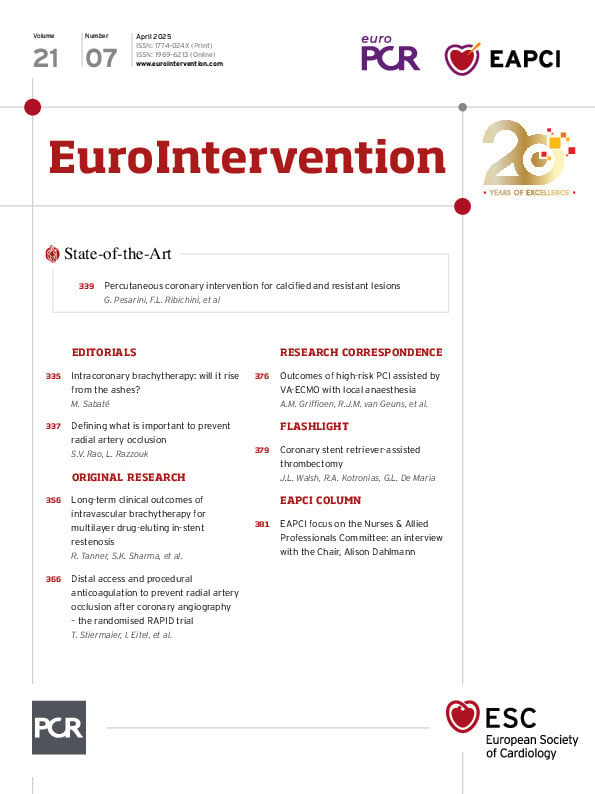The use of transradial artery access (TRA) for diagnostic coronary angiography and percutaneous coronary intervention (PCI) has steadily increased over the last two decades globally, becoming the recommended site of vascular access across the whole spectrum of coronary artery disease, with a reduction in major bleeding and vascular complications when compared with femoral access12. Radial artery occlusion (RAO) after transradial procedures varies widely from 0.8% to 30%, and is caused by trauma to the arterial wall, leading to changes in the endothelial function and neointimal hyperplasia, along with acute thrombus formation at the access site3. The use of distal transradial artery access (dTRA) might mitigate trauma to the proximal segment of the artery – a systematic review of over 9,000 patients demonstrated that dTRA is safe and feasible for coronary diagnostic and interventional procedures, with shorter haemostasis time and a lower incidence of any bleeding, RAO and pseudoaneurysm when compared with conventional TRA (cTRA)4. Patent haemostasis has been associated with a reduction in the rate of RAO5, and the PHARAOH study demonstrated that a provisional...
Sign up for free!
Join us for free and access thousands of articles from EuroIntervention, as well as presentations, videos, cases from PCRonline.com

